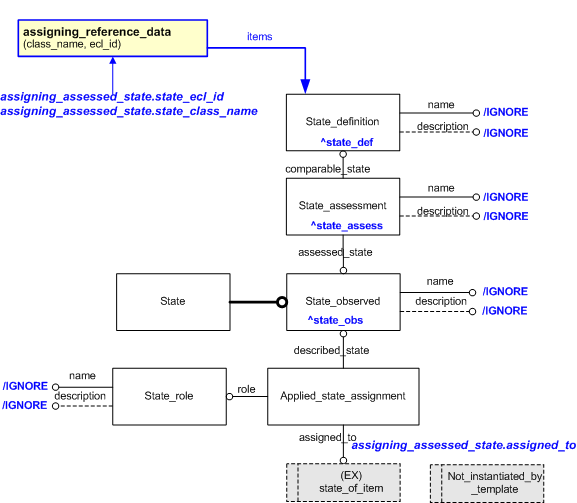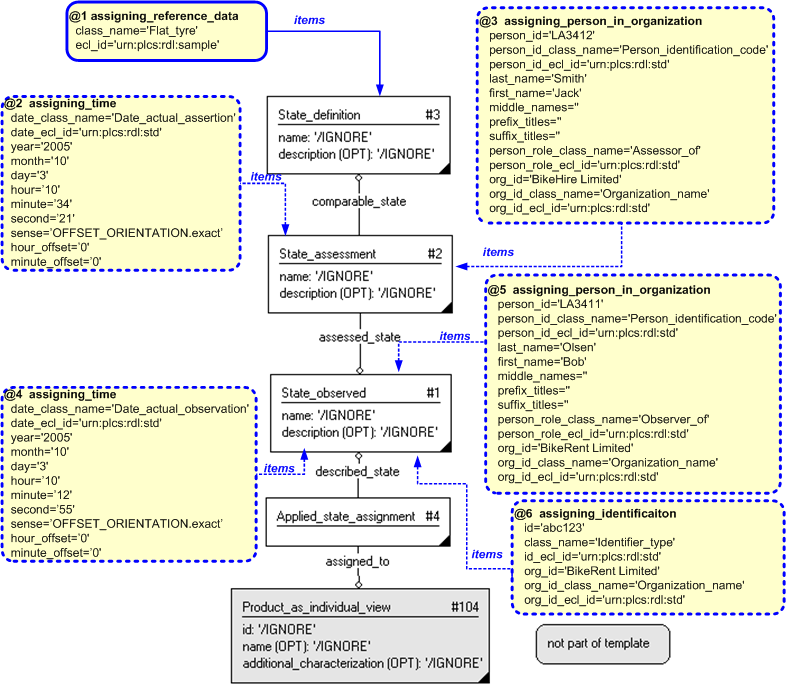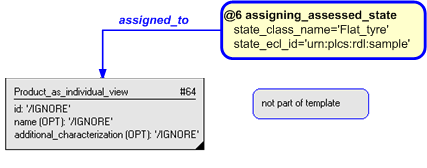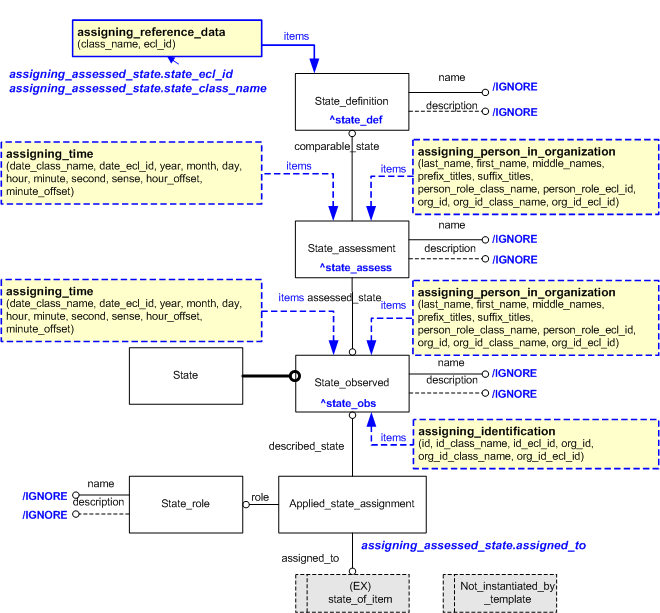
| Template:— assigning_assessed_state (asg_asd_state) Capability:representing_state_observed |
Date: 2008/02/20 08:05:00 Revision: 1.16 |
This section specifies the template assigning_assessed_state.
NOTE The template has been defined in the context of the capability representing_state_observed which provides an overall description of the relevant parts of the ISO 10303-239 information model and a description of related templates.
NOTE An explanation of a template and the associated instantiation path is provided in the Template overview section.
This template describes how to represent the fact that something has been observed to be in a given state. This is purely an observation which has not been confirmed by evidence such as a measurement.


target
is the parameter to which the
State_definition
is bound.
target
is the parameter to which the
State_observed
is bound.
target
is the parameter to which the
State_assessment
is bound.
| Entity in path | Value | Inherited from |
| State_role.name | '/IGNORE' | — |
| State_role.description | '/IGNORE' | — |
| State_observed.name | '/IGNORE' | State.name |
| State_observed.description | '/IGNORE' | State.description |
| State_assessment.name | '/IGNORE' | — |
| State_assessment.description | '/IGNORE' | — |
| State_definition.name | '/IGNORE' | — |
| State_definition.description | '/IGNORE' | — |



NOTE this characterization is optional.
Dates and times can be associated with the assignment of an assessed state in a given role by using the template assigning_time.

Several dates can be assigned to the template assigning_assessed_state, however two dates and times are commonly assigned to these being the date and times on which the state was assessed and the date and time when the state was observed.
The date and time on which the state was assessed is represented by using the template assigning_time to assign a date and time to State_assessment. The date assignment is classified as: "Date actual assessment" (urn:plcs:rdl:std:Date actual assessment) to indicate that it is the date and time when the state was assessed. This is illustrated in Figure 6.
The date and time on which the state was observed is represented by using the template assigning_time to assign a date and time to State_observed. The date assignment is classified as: "Date actual observation" (urn:plcs:rdl:std:Date actual observation) to indicate that it is the date and time when the state was observed. This is illustrated in Figure 6.
NOTE this characterization is optional.
People can be associated with the assignment of an assessed state in a given role by using the template assigning_person_in_organization to assign a person to either a State_observed or a State_assessment.

Several roles can be assigned to an assessed state. Two common roles in which people are assigned to the assignment of an assessed state are as an "Assessor of" the state and as an "Observer of" the state.
The person who assessed the state is represented by using the template assigning_person_in_organization to assign a person to State_assessment. The assignment of the person (Organization_or_person_in_organization_assignment) is classified as: "Assessor of" (urn:plcs:rdl:std:Assessor of) to indicate that it is this person who has assessed the state. This is illustrated in Figure 7.
The person who observed the state is represented by using the template assigning_person_in_organization to assign a person to State_observed. The assignment of the person (Organization_or_person_in_organization_assignment) is classified as: "Observer of" (urn:plcs:rdl:std:Observer of) to indicate that it is this person who has observed the state. This is illustrated in Figure 7.
NOTE this characterization is optional.
Identifiers can be associated with the assignment of an assessed state by using the template assigning_identification to assign an identifier to a State_observed.

An example of the use of an identifier could be to identify the fault that is the reason for a repair activity.
© OASIS 2010 — All rights reserved